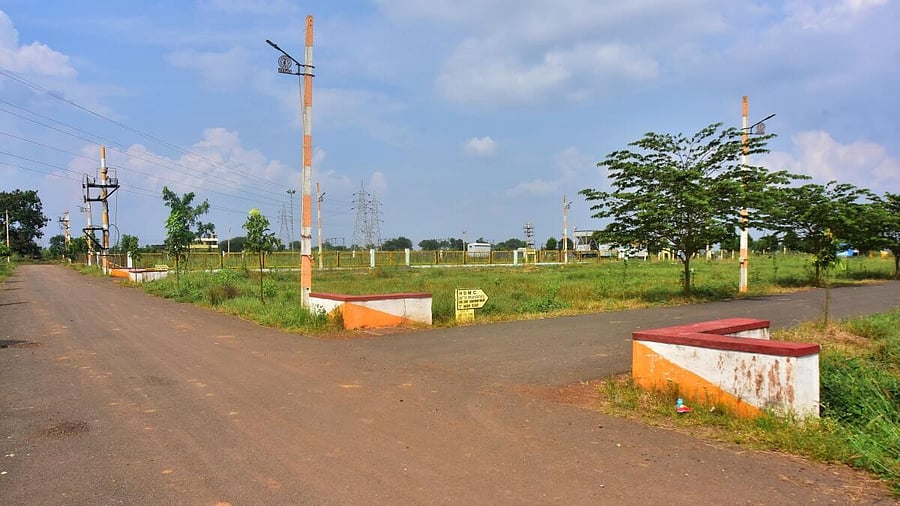
Many residents think that the new scheme may increase land value for owners, but it won’t fix the lack of roads, drainage and other shortcomings.
Bengaluru: When the government launched the scheme to convert ‘B’ khata plots to ‘A’ khata in Greater Bengaluru Authority (GBA) limits, it described the much-awaited initiative as a ‘Deepavali gift’.
But this gift comes at a steep price — not in thousands, but in lakhs. Reason: the government has fixed 5% of the property’s guidance value as the conversion fee. The scheme is optional, yet for many unaffordable.
Guidance value in Bengaluru ranges from about Rs 5,000 per sq ft to over Rs 20,000 depending on the location and road width. For instance, a 30x40 sq ft plot in Mahadevapura — with a guidance value of Rs 7,500 — would require a payment of nearly Rs 4.5 lakh to upgrade from ‘B’ khata to ‘A’ khata.
As per official records, there are about 7.5 lakh ‘B’ khata properties under GBA, spread across five city corporations. Officials believe another 7.5 lakh properties are yet to be brought under the tax net.
Deputy Chief Minister D K Shivakumar has called the scheme the government’s ‘sixth guarantee’. It is, however, projected to generate a conservative revenue of Rs 5,000 crore without any additional expenditure, unlike other guarantee schemes.
The offer, however, applies only to vacant plots or single-owner buildings, not individual flats or multi-storey apartments. More importantly, properties with an ‘e-Khata’ can apply.
Mixed reactions
Reactions among property owners are divided. Some call it a long-overdue reform, while others say the 5% fee is too steep.
Thomas Varkey, a resident of Horamavu-Agara, said he isn’t keen on applying.
“When Akrama Sakrama was introduced in 2008, the betterment charge was only Rs 30,000 and even that was unaffordable for many. Eventually, the initiative was stayed by the Supreme Court. As per the new scheme, I’ll have to pay Rs 3.5 lakh for the ‘A’ khata. I see no reason to pay now since I’m not selling the property,” he said, adding the fee should be reduced to 2%.
He is in favour of the scheme as it may bring some sanity in building construction, given that ‘B’ khata properties are not eligible for building sanction plans so far, Varkey said, but questioned how the funds collected under the scheme will be used.
“If this is for development, what have they done with the money already collected as property tax? Roads in Babusapalya are pathetic. Cauvery water hasn’t reached most houses in the locality, and there are no parks,” he said.
Others, however, welcome the move. “We’ve been waiting for this for 20 years,” said Vinod Reddy of Mahadevapura. “Everyone wants clear property records especially if it’s their only plot. A ‘B’ khata property worth Rs 3 crore fetches only Rs 30 lakh in loans. Owning an ‘A’ khata site is like owning a BDA plot,” he said.
A senior GBA official said the response had been encouraging. “We’ve received over 25,000 visitors to the portal and 500 applications so far,” the official said, adding that inspections will begin on November 1.
Wrong precedent
Most ‘B’ khata plots are situated in the city’s peripheral areas like KR Puram, Mahadevapura and Bommanahalli. An approved layout is required to reserve 5% of its area for civic amenities, 10% for parks, and at least 22% for roads.
The land is then handed over to the government. For comparison, Banaswadi, developed by BDA, has nine parks while Babusapalya, with mostly revenue or unapproved layouts, has none. Both these neighborhoods are situated on either side of the ring road.
“While the conversion will increase land value, it won’t fix the absence of roads, drainage and civic amenities,” said a city-based builder. “First, the government lets unauthorised layouts thrive and now rewards them,” he said.
Developers like Errol Fernandes, CMD of Ferns Estates and Developers, believe a one-time settlement is inevitable. “The damage is already done — government can’t demolish homes now. The focus should be on using this revenue to widen roads and create parks, even if that means acquiring vacant land,” he said.
There is also a fear that unauthorised development of layouts will continue in future. This is because the government is making it easier to break rules than comply with, industry veterans said.
What’s more, the scheme is being made applicable even to plots larger than half an acre, not just small sites of 20x30 or 40x60 sq ft.
A town planning expert said the government should perform the job of a regulatory body and not a revenue generating entity. “If the government wants revenue, it should strengthen enterprises like Mysore Sandal Soap factory, not regularise illegal plots. This will only contribute to Bengaluru’s decay,” he said.
The scheme, he added, may benefit a few property owners, but the public in general will be the losers.
“The government keeps talking about development, but what’s the use if people live without basic infrastructure?,” he said. “It’s like having grand interiors in a house surrounded by slums,” the expert said.